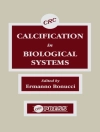ATP acts as main energy source and is pivotal for numerous signaling cascades both inside the cells (by fuelling various transport systems and donating phosphate groups) and between the cells (by chemical transmission). Similarly glutamate acts as an important molecule for both intercellular signaling though glutamatergic transmission and cell energetics by contributing to ATP production.
In this collection of chapters, written by the leading experts in the field of cell metabolism and energetics, intracellular signaling and neurotransmission we covered various aspects of the interfacing between these two fundamental molecules. This book will be particularly useful for researchers, students, physicians and psychotherapists working in the field of neurobiology, neurology and psychiatry.Tabela de Conteúdo
1. Glutamate and ATP: The Crossroads of Signaling and Metabolism in the Brain.- 2. Glutamate Metabolism in the Brain Focusing on Astrocytes.- 3. Glycogenolysis and Purinergic Signaling.- 4. Purinergic and Glutamatergic Receptors on Astroglia.- 5. Regulated Exocytosis in Astrocytes Is as Slow as the Metabolic Availability of Gliotransmitters: Focus on Glutamate and ATP.- 6. Adenosine and Glutamate in Neuroglial Interaction: Implications for Circadian Disorders and Alcoholism.- 7. Purinergic Receptor Stimulation Decreases Ischemic Brain Damage By Energizing Astrocyte Mitochondria.- 8. Excitotoxicity and Mitochondrial Dysfunction Underlie Age-dependent Ischemic White Matter Injury.- 9. Role of Astrocytes in Delayed Neuronal Death: GLT-1 and its Novel Regulation by Micro RNAs.- 10. Ca2+ Signaling in Astrocytes and its Role in Ischemic Stroke.- 11. Pathological Potential of Astroglial Purinergic Receptors.












